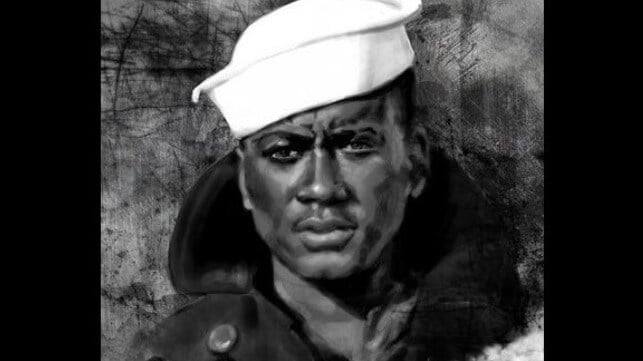U.S. Navy Names Destroyer After WWII Hero Charles J. French

The U.S. Navy has named its next destroyer after a World War II hero, Petty Officer Charles Jackson French, known as the "Human Tugboat" for his efforts to tow injured shipmates to safety.
French, an orphan, joined the Navy in 1937 and served one tour as a mess attendant aboard the cruiser USS Houston. He left the Navy with an honorable discharge in November 1941 and moved to Omaha, but not for long. He had been out of the service for barely a month when the Japanese armed forces attacked Pearl Harbor. He re-enlisted and was assigned to the high speed transport USS Gregory, a former destroyer refitted to carry Marines and launch boats for amphibious assault operations.
After a training workup in the spring and summer of 1942, USS Gregory and three sister ships headed west to join the Guadalcanal campaign, the first shoreside step in the Pacific Theater "island-hopping" strategy. Gregory's Marine Corps complement was part of the first assault wave at Guadalcanal on August 7. After the landing, the transport worked in the area to shuttle supplies and patrol for Japanese submarines.
In the early hours of September 5, USS Gregory and sister ship USS Little had finished a transport mission to Savo Island and were transiting just offshore. At 0056 hours, their crews saw cannon fire in the distance. Three Japanese destroyers - Y?dachi, Hatsuyuki and Murakumo - had snuck into position and were bombarding the Marine Corps emplacements at Henderson Field.
Before the lightly-armed Gregory and Little could flee, they were silhouetted against the night by a string of flares, which had been dropped by a Navy pilot who thought he was illuminating an enemy submarine. The Japanese destroyer crews spotted the transports opened fire, and their cannonfire left both Gregory and Little disabled and sinking. Gregory's commanding officer, Lt. Cmdr. Harry F. Bauer, ordered abandon ship. The bombardment did not entirely cease: At 0123, the Japanese destroyers began shelling the survivors in the water.
Those in the water had a choice: stay at sea and hope to evade Japanese fire or a shark attack, or swim for shore and risk capture or death at the hands of Japanese forces on Guadalcanal. Petty Officer French was aboard a raft of survivors, most of whom were hurt. He tied a rope around his waist, got in the water and swam for hours, hoping to keep the raft out of harm's way. All aboard survived and were safely rescued by a Marine Corps landing craft in the morning.
French received a letter of commendation for his actions, but did not receive a medal in his lifetime. Later in the war, he returned to sea as a messman aboard USS Endicott and USS Frankford, serving in the Atlantic Theater. French's history after the war is less clear; he died in 1956, at the age of 37, and was buried at a military cemetery in San Diego. He was posthumously awarded the Navy Marine Corps Medal in 2022. “For too long, we did not recognize Petty Officer French appropriately, but we’ve begun to correct that,” said Navy Secretary Carlos Del Toro on Wednesday. “Today, with profound conviction and a heart brimming with long-overdue recognition, I am proud to announce the name of our newest destroyer, DDG 142, will be the USS Charles J. French.”
USS French will be the Navy's 91st Arleigh Burke-class destroyer, and will be built at Ingalls Shipbuilding in Mississippi beginning in 2026.
